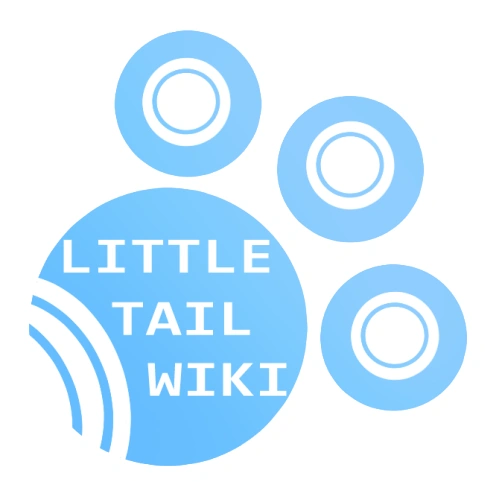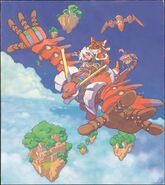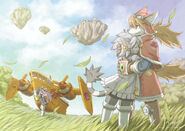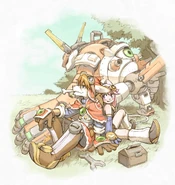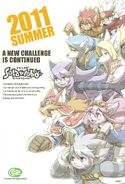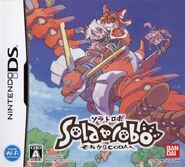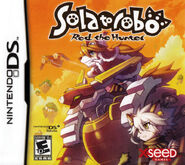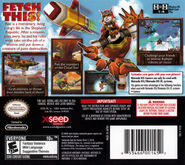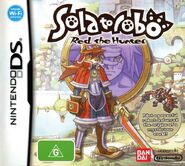mNo edit summary Tag: Visual edit |
No edit summary Tag: Visual edit |
||
| Line 62: | Line 62: | ||
On October 21st, 2010, ''Solatorobo'' had won the Guinness world record for airing the most TV commercials for a single product with a whopping 100 15-second commercials in Japan.<ref>https://www.guinnessworldrecords.com/world-records/most-tv-commercials-for-the-same-product-(8-hrs)-regionalfree-to-air</ref> All of the commercials were aired on the same day, which would unfortunately become a detriment to the game's success as no other televised advertising was created outside of setting the record. |
On October 21st, 2010, ''Solatorobo'' had won the Guinness world record for airing the most TV commercials for a single product with a whopping 100 15-second commercials in Japan.<ref>https://www.guinnessworldrecords.com/world-records/most-tv-commercials-for-the-same-product-(8-hrs)-regionalfree-to-air</ref> All of the commercials were aired on the same day, which would unfortunately become a detriment to the game's success as no other televised advertising was created outside of setting the record. |
||
| − | Most of these 100 commercials would briefly cover parts of ''Little Tail Bronx''<nowiki/>'s lore (as of ''Solatorobo''), characters in the game, and locations. |
+ | Most of these 100 commercials would briefly cover parts of ''Little Tail Bronx''<nowiki/>'s lore (as of ''Solatorobo''), characters in the game, and locations. [https://www.youtube.com/playlist?list=PL5062B3462839B44C A complete Youtube playlist of every ad in HD can be viewed here.] |
| + | |||
=== <u>Magazine Coverage</u> === |
=== <u>Magazine Coverage</u> === |
||
Revision as of 09:55, 19 November 2021

|
"AARRRGGHH!!"
This article contains Solatorobo spoilers, continue at your own risk. |

|
Stub
This article is a stub, why not consider adding more information to improve its status? |
Solatorobo: Red the Hunter, also known as Soratorobo -Sore Kara Kōda e- (ソラトロボ -それからCODAへ- lit. Solatorobo: And Then, to CODA) in Japan, is the second mainline game of the Little Tail Bronx series and the spiritual successor to Tail Concerto.
The game follows the story of Red Savarin and his adoptive sister Chocolat Gelato, a pair of young Hunters from the Shepherd Republic. Their entire world changes when Red has a fated encounter with a strange Felineko.
Story
Solatorobo's story is divided by two parts, which are further divided into ten chapters each. This summary will go over each part and its respective chapters.
PART ONE
- Prologue - Initial Emergence
- Chapter One - Contract with You
- Chapter Two - Raid of the Kurvaz!
- Chapter Three - The Paladin Clan
- Chapter Four - Elh's Phobia
- Chapter Five - A Pair of Prisoners
- Chapter Six - An Alluring Trap
- Chapter Seven - The Door... Opens
- Chapter Eight - Holy Quarter of Betrayal
- Chapter Nine - Hero, and Fool
- Final Chapter - Final Solution
PART TWO
- Chapter One - Rondo of Black and White
- Chapter Two - Fragments of Time
- Chapter Three - Like Mother and Child
- Chapter Four - Aiming for Earth
- Chapter Five - Friends
- Chapter Six - Messenger from Earth
- Chapter Seven - Guardians of the Stars
- Chapter Eight - A Call of Fangs
- Chapter Nine - Silence of the Dragons
- Final Chapter - He Who Laughs Last
Side-Stories
After the release of Solatorobo, CyberConnect2 would go on to release a series of light novels and some short manga that delved deeper into the game's world. The first of them, chronologically, is "Ragdoll Elegy". The stories would go on to also include small amounts of world building for Mamoru-kun and Tail Concerto.
Gameplay
Music
Solatorobo's music was composed by LieN, Cyberconnect2's in-house composition group. There have been two music releases for Solatorobo. The first being the Perfect Sound Track, which is an 80 track two-disc soundtrack release with an arranged version of the soundtrack, and Solatorobo Soundtrack Selections, a disc comprised of 26 tracks from the arranged tracks that were bundled with the game in its release in North America.
However, two songs were cut from the Perfect Soundtrack that was available in the game. The first being the instrumental version of Re-Coda that plays during the credits of part 1, and the second being the instrumental version of Shooting Star that plays during the side quest "Body Guard".
Credits
Development
After Tail Concerto's release, CyberConnect2 had plans to make a sequel named "Tail Concerto 2". It was to be an upgrade from the original and be released on the PlayStation 2. However, this proposal was rejected by Daisuke Uchiyama, the executive producer of Bandai (Now known as Bandai Namco) due to Tail Concerto's poor sales figures, stating that, "a sequel to a game that did not even sell was ridiculous."[citation needed]
After plans for the original Tail Concerto 2 were cancelled, CyberConnect2 would go to work creating an entirely new Little Tail Bronx game from scratch. It took 10 years of conceptualization and 3 years of development. During that time, CyberConnect2 had proven their worth with other titles such as .hack and Naruto and had gained more reputation ever since.
This new Little Tail Bronx game was still pitched as "Tail Concerto 2" to Bandai. While the project was given the green light, Bandai had requested CyberConnect2 to stop pitching it as "Tail Concerto 2", stating that if it were to be made, it would have to take place in an entirely new world. Thus, the developers started from the ground up and pitched a reworked proposal titled "Solatorobo", which translates to "Robo to sky".
Advertising
Television
On October 21st, 2010, Solatorobo had won the Guinness world record for airing the most TV commercials for a single product with a whopping 100 15-second commercials in Japan.[1] All of the commercials were aired on the same day, which would unfortunately become a detriment to the game's success as no other televised advertising was created outside of setting the record.
Most of these 100 commercials would briefly cover parts of Little Tail Bronx's lore (as of Solatorobo), characters in the game, and locations. A complete Youtube playlist of every ad in HD can be viewed here.
Magazine Coverage
Solatorobo's main form of advertising in the western world was through video game magazine coverage. While slim, a few notable magazines had featured the game as preview articles such as Nintendo Power, N-Gamer[2], and the Official Nintendo Magazine[3]. This was all in the age where magazines were being phased out in favor of online journalism, thus further crippling Solatorobo's success on a global scale.
Official Artwork
Boxart Scans
References
External Links
Official Website (Japanese) (Archived by web.archive.org)
Official European Website
Official North American Website
| Solatorobo | |
|---|---|
| Locations: | Airedale, Spinon, Davren Islands, Vizsla, Shetland, Basset, Samoyede, Golden Roar, Pharaoh, Mau, Sealyham, Duel Ship, Lares, Tartaros, Ragdoll |
| Main Characters: | Red Savarin, Chocolat Gelato, Elh Melizée |
| Supporting: | Béluga Damiens, Québec, Flo, Fraisier |
| Kurvaz: | Bruno Dondurma, Opéra Kranz, Gren Sacher, Calua Napage, Merveille Million |
| Red Data Children: | Nero, Blanck, Carmine, Rose, Rouge, Vermillion |
| Mechas: | Dahak-AZI03, Dahak MK2, Tiamat-FL, Mephisto TA, Ultra Méphisto, Cassandra Cross, Zairita-AZI02, Salamander//009, Septentrion, Srvara-AZI01 |
